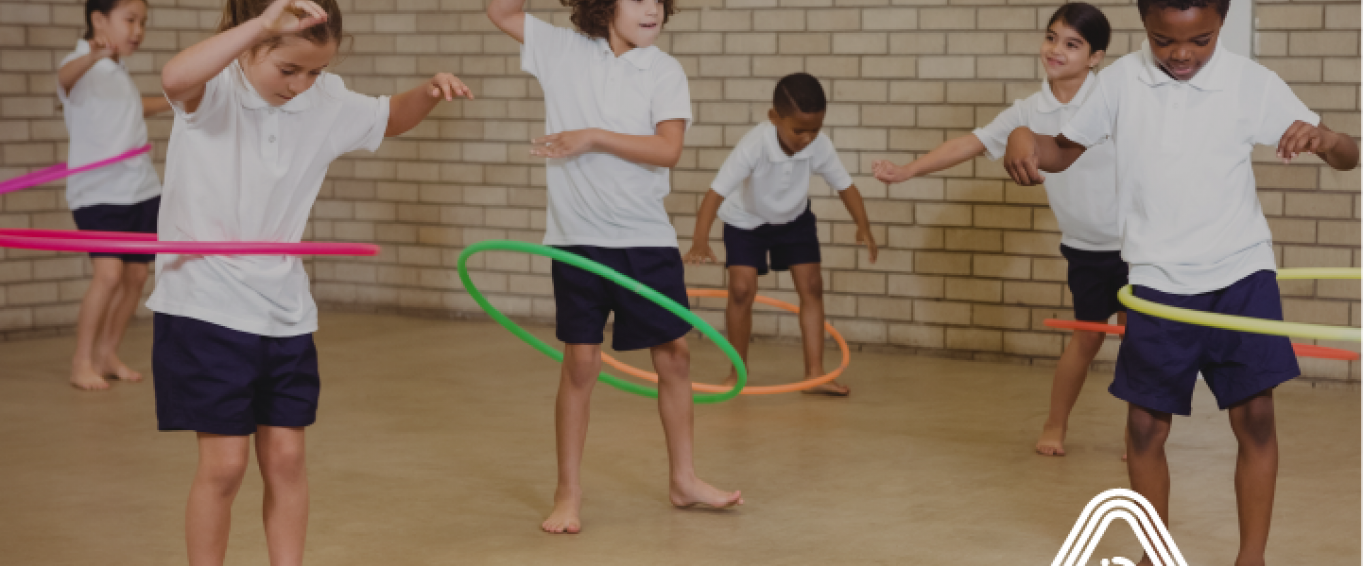How to help primary pupils get 60 mins of activity every day

The UK Chief Medical Officers’ recommend that all children should engage in moderate to vigorous intensity physical activity for at least 60 minutes every day. However, when most schools only timetable two hours of physical activity per week, how can we ensure that each child meets the daily target of one hour?
The benefits for children who engage in regular physical activity are numerous. Physical activity improves physical wellbeing and reduces the risk of developing illnesses. In addition to this, the learning of the fundamental movement skills are essential for the physical growth and cognitive development of each child.
Studies have found that regular activity stimulates new brain cell growth, and immediately after activity, problem solving, memory and attention also improve. Exercise improves physical wellbeing and reduces the risk of illnesses. In addition to this, the development of the fundamental movement skills is essential for the physical growth and cognitive development of each child. Studies have found that regular exercise stimulates new brain cell growth, and immediately after exercise, problem solving, memory and attention improve.
Just 60 minutes of vigorous activity per day will allow children to focus better in school and while studying so they can retain more information. In addition, as a great side effect, activity will even out mood, improve quality of sleep and build self-confidence.
Tips for teachers to boost activity in school
The national curriculum states that students should receive two hours of timetabled physical activity per week, but we believe that primary schools and parents should be doing more to encourage children to get active throughout the school day and easily hit their one hour a day target. Here are a few simple ways that you can help pupils to be consistently active and meet their 60 minute a day goals.
Active break times
Kids should be given the opportunity to blow off steam during their break times so they can return to lessons feeling energised and ready to learn. This means ensuring that there is always an organised sport or game every lunch time which is inclusive to all abilities. If it’s raining outside or very cold weather, primary schools should designate an inside area to hold an indoor physical activity, such as bench ball.
Increase breaks
Alternatively, shake up the school day by splitting up the longer breaks into more frequent shorter breaks to make sure children aren't sat down at their desks for long periods of time.
Extracurricular sports clubs
Schools have the responsibility to ensure that each child gets 30 minutes of activity throughout the course of the day, then technically it is up to the parents to ensure that their kids get the rest. However, many parents aren’t able to ensure their kids stay active when they get home from school, so it is still up to the school to put on extracurricular activities to ensure that every child has the opportunity to be active once school has finished.
Step challenges
60 minutes doesn’t have to be in one block, children could spread out their activity throughout the school day. One way to promote activity is by using fitness trackers, such as a pedometer, to monitor the steps of each child. Teachers can set step challenges on daily, weekly and monthly basis, and the children who do the most steps could win a prize.
Access to an onsite gym
While this may not be possible for every primary school, having access to a designated gym space can boost the physical activity of many pupils. This could be an alternative for children who lack-confidence to play in team sports outside of school. They could spend one hour exercising in the gym instead, being supervised by a teacher and following bodyweight moves.
Personalised home activity plans
Setting pupils activities that they can do outside of structured lessons will encourage them to learn the fundamental movement skills and develop the confidence that underpins sporting ability. Ensuring that the activity plans are personalised to the pupil in order to get the most out of their additional activity.
Running club
A campiagn called the Daily Mile was set up to help kids get their 60 minutes of activity a day by encouraging primary schools to run a mile outside every morning. The campaign was a huge success due to its simplicity and many schools across the UK got involved. Each child runs in their school uniform and the mile takes around 15 minutes to complete which makes it a simple way to boost activity.
Active lessons
Physical activity doesn’t have to be all about PE, teachers can boost activity levels by creating active lessons. For example, words and number can correlate to different activities.
PE solution group
As you can see, there are a number of ways that you can encourage kids to get an hour of physical activity each day. While many of the ideas are simple, they do require additional organisation and time. If you are struggling to discuss more than just fixtures during usual PE meeting time, we suggest that you create a separate PE solutions group. In this group, you can brainstorm ideas and create a strategy to ensure that incidental exercise (away from structed PE) is increased in your school. Empower pupils to be more active by allowing them to pitch in their own ideas too.
If you'd like to know more about Amaven's home activity plans, please contact us and a member of the team will get back to you shortly.